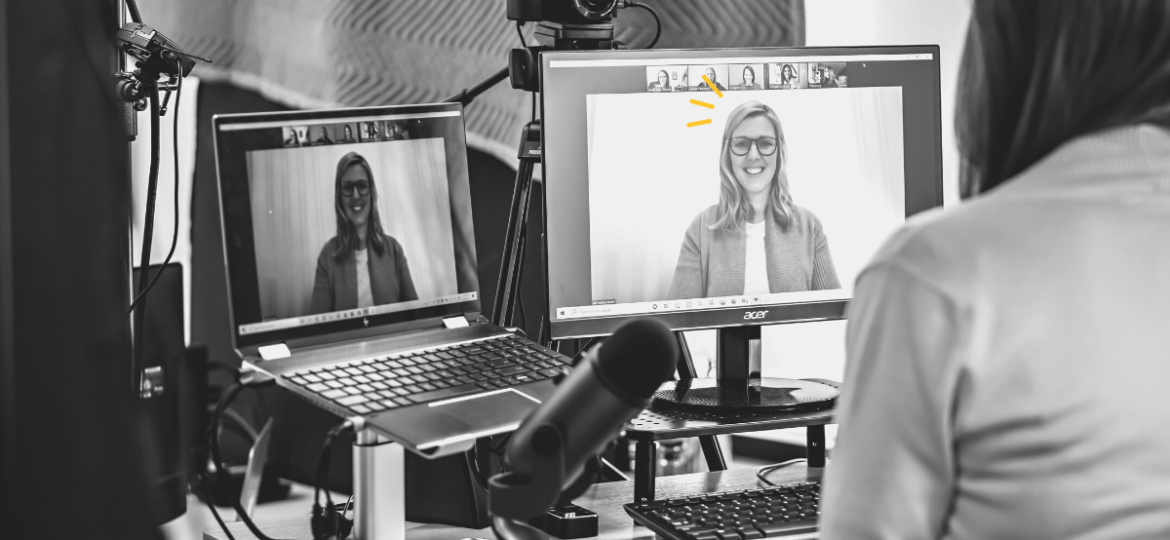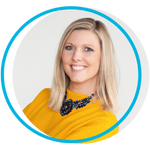
One pillar of the human-centered work that we do here is that nobody–and no company–succeeds in a vacuum. We need each other to grow, and mentorship is a great vehicle to foster that growth for you and your mentee(s). These symbiotic relationships, however, don’t just happen. You have to create them. But how? And what is the difference in impact between going through the motions with a mentee and co-designing a powerful partnership?
Let’s take a look.
The Value of ‘Co-Designing’
I work with many leaders who recognize the significance of mentoring and nurturing other high-performing team members. While the intention is noble, though, it can be easy to fall into the trap of jumping right into big objectives (like goal setting) without first getting to know your mentee: what they need, what they’re good at, what motivates them, where they need support, and so on.
To avoid this, start your relationship from a place of curiosity. Ask specific questions, such as exploring how the mentee prefers to work in a partnership, what they expect from your time together, and so on (see Step 1 of the Framework). But to co-design a powerful partnership, it’s important that you, the mentor, also share your partnership preferences, your work styles and expectations, and so on. This mutual setting-of-the-stage is beneficial because then everyone in the partnership gets to say what they need, what they value, etc. This doesn’t make you any less the coach in the scenario, but it does provide a foundation of honesty from which to grow the relationship in a way that positively impacts everyone involved.
Co-designing is a huge value-add to your mentee(s), especially because they may have made assumptions about what skills they need to build or what they need to work on . . . which may or may not align with your assessment. This is where those deeper questions can open doors for increased self-awareness, to uncover insights and prompt deeper conversations. It will also prevent a scenario in which the goals you set together are too intangible to be effective, setting you back from the start.
The power of co-designing is not with the person; it’s with the relationship. The more you model curiosity and vulnerability, the stronger your foundation of psychological safety from which trust can grow—the ultimate key to a powerful partnership.
The Framework
Step One: Get Curious
Ask foundational questions of your mentee (and yourself), such as:
- What is your expectation from this partnership/experience altogether?
- How do you want to show up for yourself and our partnership, during and in between our check-in points?
- How do you like to work together? What are your needs and preferences?
- What preferences come into play in terms of logistics, communication, feedback, support, etc.?
- What fundamentally drives you in your professional life (ambitions, passions, beliefs, values, etc)?
- How do you add value in your work today?
- What talents/skills do you have that you’re most grateful for?
- In what areas do you wish to grow and improve?
And remember, for this to become a co-designed partnership, be sure to share your preferences, values, expectations, and professional experiences with your mentee, too.
A beautiful side-effect of this line of questioning is often that all parties come away feeling more connected and with a higher degree of self-awareness. Sharing your path to success also helps the mentee recognize that growth is a journey, and a worthwhile one at that.
Step Two: Go Deeper
If trust has been built and you feel comfortable enough to go deeper, consider asking about and/or sharing limitations that might slow down the progress. Specifically, explore the effect of environmental and health factors, past negative experiences and beliefs that are still present today, and so on. For example, I am open about the fact that I have ADHD, which has and still does affect my progress in certain areas. Naming these very human experiences and strategizing honestly is a great way to not only connect on a more personal level, but also to increase opportunities for both personal and professional growth.
Note that this degree of vulnerability can indeed be very beneficial to the partnership, but a foundation of trust and safety must be built first. This is critical.
Step Three: Discuss Vision
Once your relationship baseline has been established, it’s time to look at the bigger picture and establish a vision. Ask questions like:
- What purpose do you wish to fulfill in your career? Why is this important to you? What value might you fulfill?
- Where do you want to go from here? What’s your next professional milestone?
- What do you want to start learning/doing/improving today that would increase the likelihood of making these wishes come true?
Step Four: Set Goals
Now is the time to discuss strategy and set specific goals and objectives, together. (Remember, jumping right to step four to start with bypasses all the important interpersonal groundwork above and can impede progress.)
The Benefits
Mentoring via this specific co-designed, human-centric way allows you to grow, also, in the process. Here are a few ways:
- Improve your listening skills
- Learn a new way to build trusting relationships with people you don’t know yet
- Act as a coach by asking powerful questions and challenging the mentee on their growth journey
- Practice and demonstrate how to have difficult conversations (especially when the mentee slips up and doesn’t stick to commitments, misses meetings or deadlines, etc.)
- Have a positive impact by demonstrating how to build powerful partnerships and passing along best practices, knowledge, and life experiences
What’s Next?
We’ve been talking about co-designing mutually beneficial partnerships as it relates to mentorship, but the benefits don’t stop at those one-on-one opportunities. This framework can also be used with your teams or in personal settings.
At the end of the day, no matter the scenario, if you’re entering into a partnership with a fellow human, frontloading intentionality and genuine curiosity will make (and will help you make) a significant impact.
How have you approached your coaching or mentoring interactions in the past? What worked for you, and what didn’t? Next time, I invite you to try the framework and examine how that changes the experience for you and your mentee.
Kristin Sauter, a Co-Active Leadership Coach, is a native German who brings an international perspective to her coaching through her past work in the UK, the United States, Germany, and points in between. Kristin’s work with Sarah and many leaders across the U.S. has allowed her to build a deeper understanding and appreciation of people-focused leadership, what Kristin terms “PEOPLESHIP.” Kristin shares her passion and advocacy for mental well-being in her coaching with the belief in unashamedly sharing experiences and exploring healthier paths to emotional fitness using the principle of Positive Intelligence.


